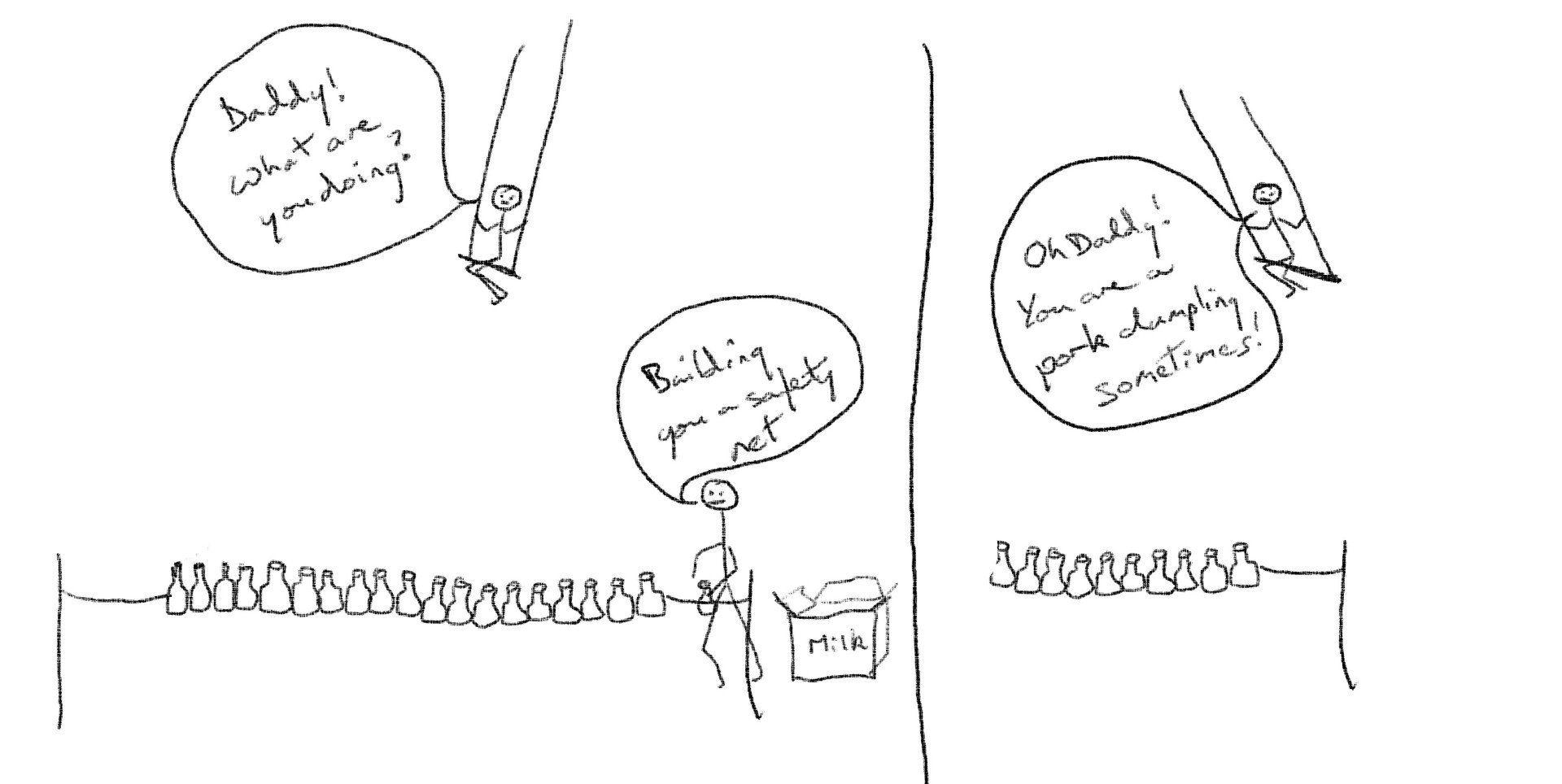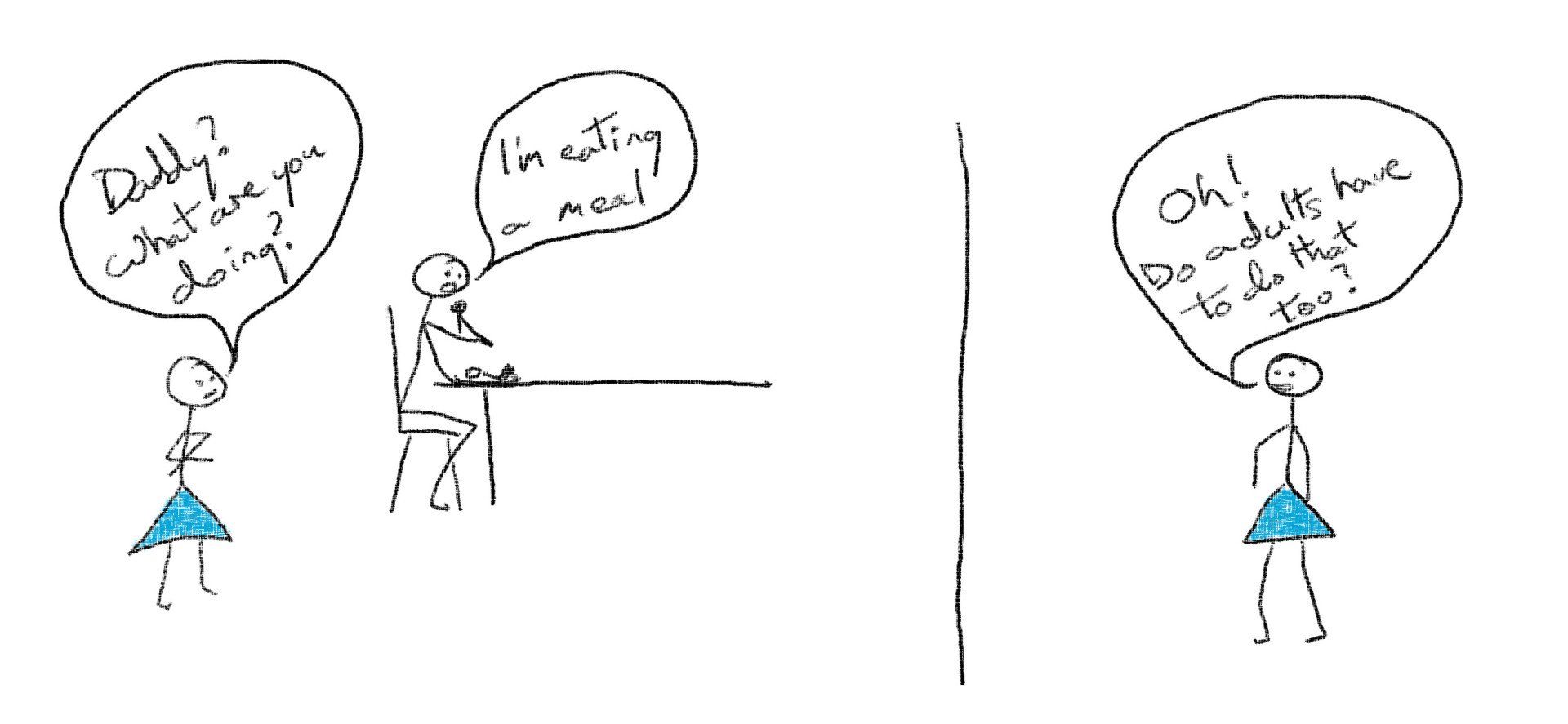
Are You...
Making Mealtimes A Battleground
Part 2: Modern Family Life
Helping create a healthy attitude to food is one of the greatest gifts we can give our children.
And yet, modern family life makes it orders of magnitude more difficult to achieve today than at any other point in history.
Trusting our instincts is dangerous. We need to explicitly learn how to help our children learn.
Key Points:
- For most of history, learning about food happened naturally
- Children would observe, or be involved in, every stage of food gathering, production and preparation
- From the moment they were born they would have carefully watched as their family ate the same food, day in and day out
- But, the world has changed, modern family life no longer provides the same safe learning environment
- Rather than the same types of food every day there is now an explosion of different food available from all over the world
- As parents we need to explicitly learn how to replace what has been lost
- Not doing so can lead to serious long term consequences
Introduction
In Part 1
of this series we learnt that:
- for much of history, the challenge for young children was to avoid poisoning themselves, not having to 'try' something they're not sure of
- they would have seen the same restricted range of foods being eaten over and over again
- they would have learnt what is safe to eat by watching others eat, handling food, being involved in its preparation etc. not by putting it in their mouths and swallowing it
In Part 2
we will explore the unique challenges our young children face in the modern world.
Most guides to helping children eat well emphasise the importance of family mealtimes, but why?
The Unique Challenges of Modern Family Life
Once we understand how young children learn what is and isn't safe to eat it is not difficult to see how modern family life has made things so much more difficult for all concerned:
- Family mealtimes have been replaced by children eating alone, or at best with other children
- Simple restricted diets have been replaced by a vast range of food types and dishes from all over the world
- Meals are often bought ready prepared so that children don't have the chance to be involved in their production and preparation
- Children are often weaned with foods that bear little resemblance to family meals, especially in texture
- The natural safety net of milk is little understood and often withdrawn too early
- Children increasingly eat meals away from the family home putting parents under pressure to get them used to a wide range of foods at a very young age
- Children are often exposed to a huge range of illnesses just as they are starting to learn about food. Illnesses that can lead to rejecting previously loved foods for fear they were the cause
- Unhealthy foods that were once a rare treat have become so accessible and affordable that it's increasingly difficult to find the healthy options
Is it any wonder that mealtimes become a battleground and that eating disorders are on the rise?
1. Children Often Eat Alone
In the first two or three years of her life our daughter rarely ate at the same time as us.
There were various reasons for this:
- her mealtimes didn't match ours
- we wanted the peace and quiet to enjoy our meals while she was out of the way
- it was easier to focus on feeding her if we weren't trying to eat at the same time
We knew family mealtimes were supposed to be important, but we didn't really understand why.
What we now realise is that when children eat alone they lose their main opportunity to learn about food:
- what it looks like
- what it smells like
- and, most importantly, that it is safe to eat
To feel safe around any particular type of food children need to observe it being eaten by others many, many times.
On that basis you would hope that eating with siblings or other children would help, and indeed it can. But, much depends on the eating habits of the other children and the types of food they are given to eat.
In my experience, very few other children make good role-models for healthy eating.
2. We Eat A Massive Range of Foods From All Over The World
For most of us, as adults, being surrounded by food from all over the world is a continuous source of pleasure.
However, it is a relatively new phenomenon. Throughout history children would have been presented with a very narrow range of local, seasonal food types which they will have seen over and over again.
Now, all of a sudden, no two meals need ever be the same.
For a child this presents them with a daunting challenge. How can they possibly understand what is safe to eat?
When I was a boy, we were presented with slight variations on meat and two veg most days, whether at school or home.
When runner beans were in season we had runner beans several times a week, when plums were in season we had plums for pudding, in one guise or another, nearly every day.
There were no pizza, burger or pasta options, and although it's true we did have fish and chips, we only had them once a week on a Friday.
We became accustomed to a balanced diet because a balanced diet was all that was available to us.
Having then developed a relationship with all food groups through the narrow subset of options available, it was easier to remain balanced when later faced with different foods from around the world.
By contrast, children today are much more likely to stick to a small set of safe, largely carbohydrate based, options. This is further reinforced by school menus, fast food outlets and my absolute pet hate... children's menus in restaurants... Aggghhhh!!

3. Meals Are Bought Ready Prepared
Ready meals, take-aways, cook-in sauces, pre-prepared vegetables, eating out...
Not only do we not grow, catch, butcher and store our own food, we often don't even cook it these days.
Once again, a modern phenomenon that robs our children of the chance to:
- handle food
- see it in its raw state
- understand what goes in to the finished product
- taste things along the way
- see the transformation that occurs during cooking
- be involved in the preparation of their own food
Except, that is for cakes... how bizarre is that? As if children needed extra lessons in cake eating!
4. Children Are Weaned On 'Baby' Food
As discussed in Part 1, there is a brief honeymoon period while babies are being weaned on to solids and before they become self-mobile, where they are highly receptive to anything put in front of them.
Some of our favourite photos from this time are of my 5 month old daughter wealding a chicken thigh with intent, or with her face black all over from trying (and mostly failing) to eat fried mushrooms. Not surprisingly, these are now two of her favourite foods.
Interestingly the one thing we didn't give her, which I now wish we had, was 'baby' food. I was far too concerned about the state of her clothes and the kitchen floor to offer her anything that would be that messy, and of course, spoon feeding is a big no, no.
As a result she is far less likely to try anything that looks bland and mushy.
The point is, this brief period of our children's lives is a vital moment where:
- they can learn about the foods they will be expected to eat when they are fully weaned
- we are happier for them to explore food through all their senses without so much pressure to actually eat it
To give them food during this brief period that doesn't resemble what they will later be expected to eat is a massive missed opportunity.
This is even more true in relation to texture than it is of taste.
When it comes to a willingness to try new things, texture often trumps taste and can be judged by the eyes and hands without needing to put it in our mouths.
It's a huge help if babies are exposed to a full range of textures right from the start. Even as adults we can find it difficult to accept new foods that have a different feel in our mouths.
Thankfully, there is a movement away from spoon feeding shop bought pureed foods towards 'baby led' weaning.

5. Milk Is Often Withdrawn Too Early
I think it is sometimes a matter of pride that our children are now 'on solids'.
We seem to forget that milk provided 100% of the nutrients required to get them to 5 or 6 months old and it can provide the vast majority of the nutrients required for basic growth for some time to come.
If we accept this then children can be allowed to explore food without any pressure for them to need to swallow any of it.
Move away from the safety net of milk too soon and we place a huge amount of pressure on our children, and on ourselves, to provide all their nutrients through solid foods.
When they reject all the foods they don't yet feel safe with, our anxiety levels go through the roof and so the battles start.
6. Children Eat Meals Away From Home From An Early Age
Putting children into childcare from a young age is fraught with all sorts of emotional difficulties for most parents.
High on the list of anxieties is eating.
The thought that our precious little ones might not like, or accept, the food on offer is a difficult one for us to deal with. Partly for their own physical and emotional well-being and partly because we might have to 'pick up the pieces' later in the day when faced with a starving child.
So, we push them to accept as wide a range of foods as we can at a very early age.
And so the battles continue.
7. Young Children Are Exposed To A Massive Range Of Illnesses
These days viruses spread like wildfire around the globe. Young children that are put into childcare are heavily exposed to these viruses just at a time when they are learning what is and isn't safe to eat.
I remember my daughter being ill with one virus or another almost constantly for the first 18 months she was in nursery. Many of these were just colds, but several included bouts of vomiting.
I'm sure most of us have experience of being sick and then finding that our brains have associated the experience with a particular food that we were eating just before it happened. From that point on the very thought of that food can be sufficient to make us want to vomit.
Is it any wonder then that our young children can suddenly refuse previously loved foods, or even whole groups of food. Maybe they're not being super stubborn, maybe, once again, they're just trying to stay alive.
8. Treats Are Everywhere
Unhealthy combinations of fat and sugar, processed meats and empty carbohydrates are available to us at every turn.
These are safe foods that most children will accept.
It makes moving beyond them an even greater challenge. Especially as the healthy options are often more difficult to prepare and harder to find. Even if you're inclined to look.
The Challenge of Modern Day Living
Hopefully you are starting to build a picture of why developing a healthy relationship to food is such a challenge in today's world.
xxx
Created 12/03/2019
Last Updated 08/04/2019


